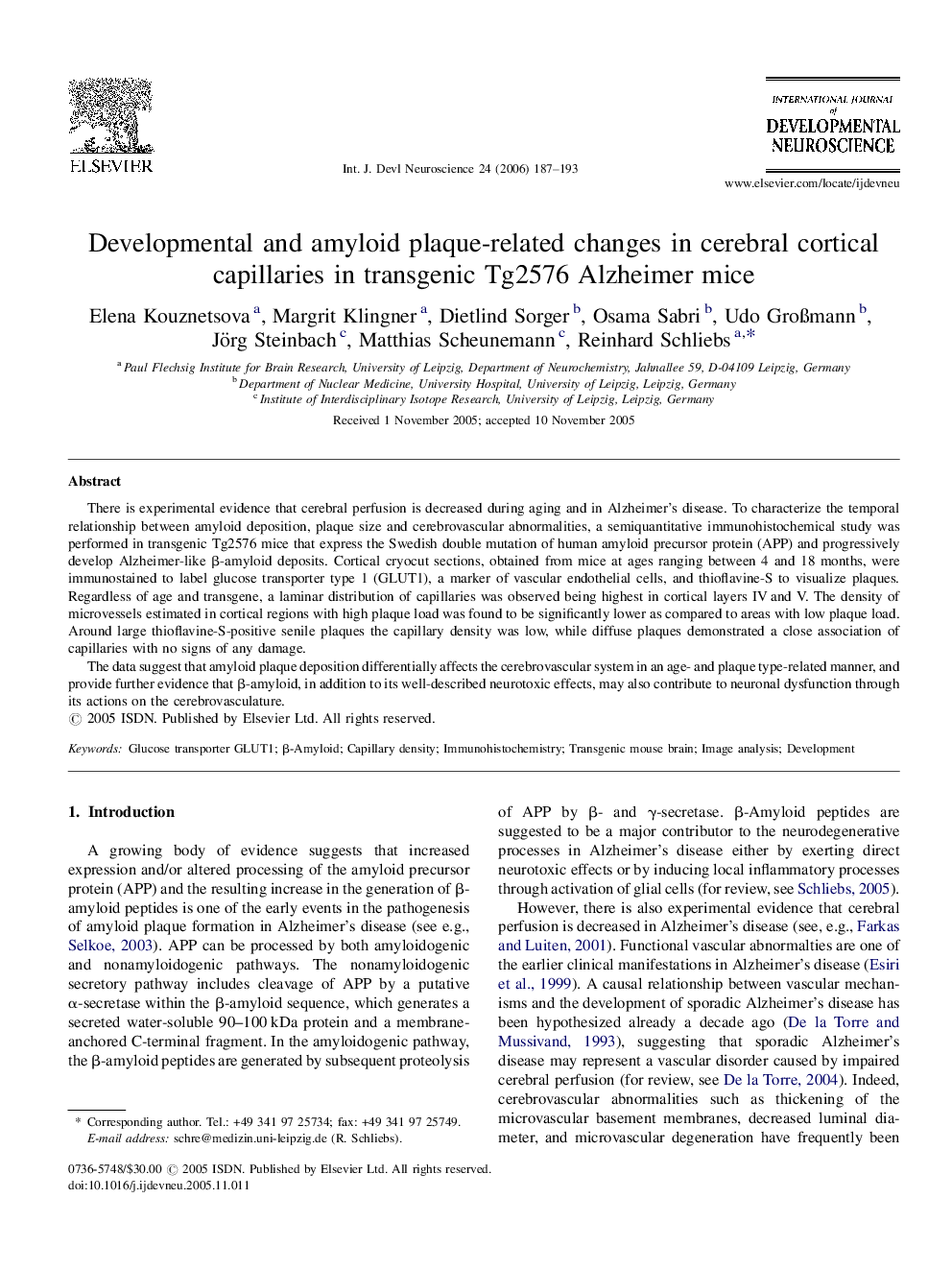| Article ID | Journal | Published Year | Pages | File Type |
|---|---|---|---|---|
| 2787175 | International Journal of Developmental Neuroscience | 2006 | 7 Pages |
There is experimental evidence that cerebral perfusion is decreased during aging and in Alzheimer's disease. To characterize the temporal relationship between amyloid deposition, plaque size and cerebrovascular abnormalities, a semiquantitative immunohistochemical study was performed in transgenic Tg2576 mice that express the Swedish double mutation of human amyloid precursor protein (APP) and progressively develop Alzheimer-like β-amyloid deposits. Cortical cryocut sections, obtained from mice at ages ranging between 4 and 18 months, were immunostained to label glucose transporter type 1 (GLUT1), a marker of vascular endothelial cells, and thioflavine-S to visualize plaques. Regardless of age and transgene, a laminar distribution of capillaries was observed being highest in cortical layers IV and V. The density of microvessels estimated in cortical regions with high plaque load was found to be significantly lower as compared to areas with low plaque load. Around large thioflavine-S-positive senile plaques the capillary density was low, while diffuse plaques demonstrated a close association of capillaries with no signs of any damage.The data suggest that amyloid plaque deposition differentially affects the cerebrovascular system in an age- and plaque type-related manner, and provide further evidence that β-amyloid, in addition to its well-described neurotoxic effects, may also contribute to neuronal dysfunction through its actions on the cerebrovasculature.
